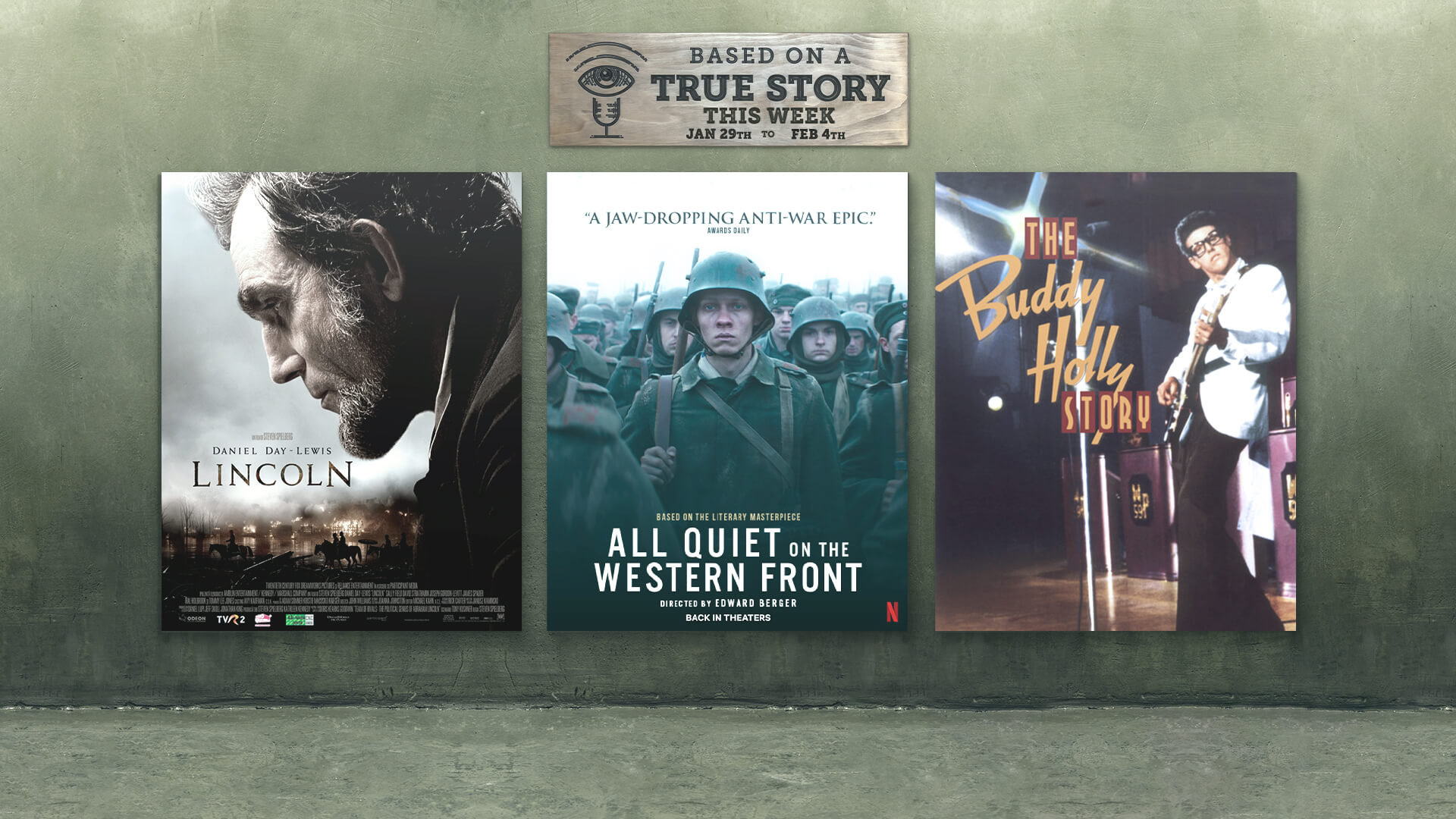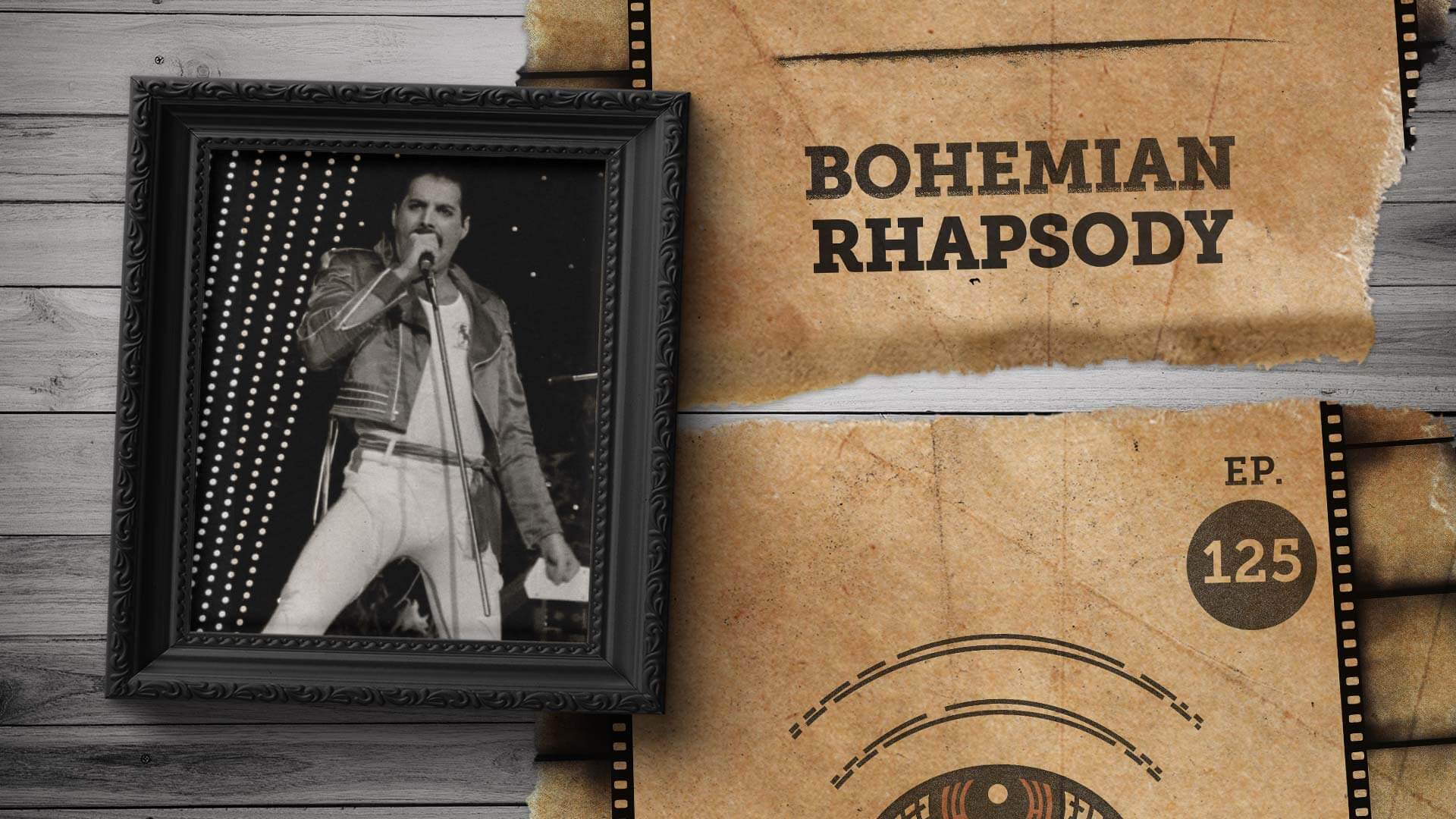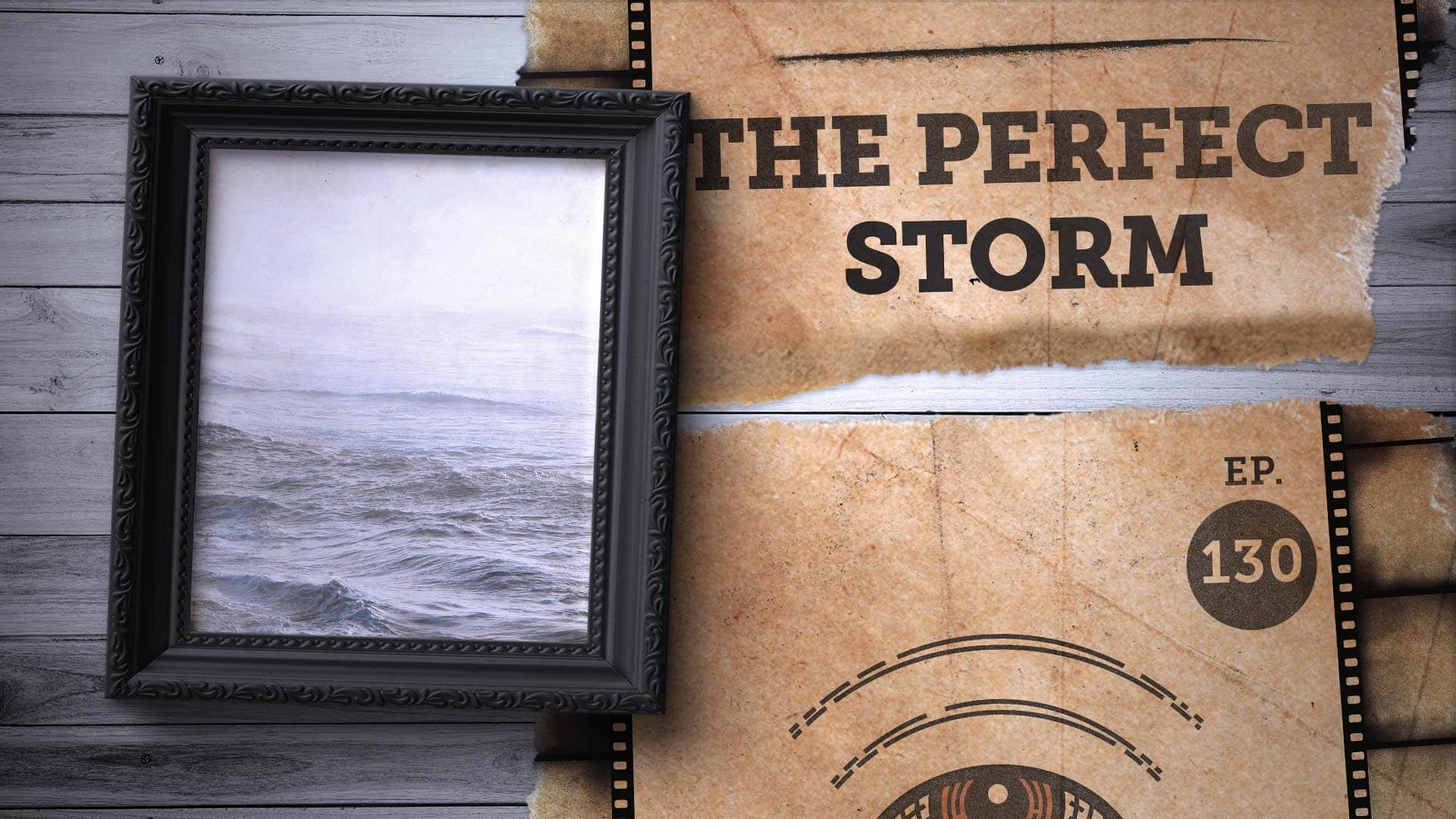For the week between January 23rd to January 29th, we’ll be learning about historical events that were depicted in Steve Jobs, U-571 and The Challenger Disaster.
Did you enjoy this episode? Help support the next one!
Disclaimer: Dan LeFebvre and/or Based on a True Story may earn commissions from qualifying purchases through our links on this page.
Transcript
Note: This transcript is automatically generated. There will be mistakes, so please don’t use them for quotes. It is provided for reference use to find things better in the audio.
January 24th, 1984. California.
The voice demo is flaky! It worked last night. It worked three hours ago. But it’s not working now, so just skip over the voice memo.
“F*** you!”
Shh!
We need it to say “hello!”
It’s not going to say “hello!”
Fix it!
Fix it?
Ha! In 40 minutes? I can’t!
“Who’s the person who can?”
Michael Stuhlbarg’s version of Andy Hertzfeld replies, “I’m the person who can, and I can’t.”
“Can’t we cut it?”
We can’t cut it. Two days ago we ran a Super Bowl ad that could’ve won an Oscar for short film. More people can tell you about the ad than can tell you who won the game.
“House opens in five!” Someone shouts from the back.
Michael Fassbender’s version of Steve Jobs replies, “Don’t open the house! We’re taking a quick break.”
Kate Winslet’s version of Joanna Hoffman continues to pressure Jobs as the stresses of the event continue.
“You need special tools to open the Mac?”
“You knew it was a closed system.”
“Not literally, Jesus.”
Hoffman and Jobs continue to argue backstage.
Jobs insists if they cancel the “hello” then John Scully will agree to cancel the launch.
Now he’s upset about the cover of Time magazine. He gave them full access, but he’s not happy with the result.
Hoffman says it doesn’t matter, but she’s concerned with the idea that they’ll sell a million Macintosh’s in the first 90 days. Is that realistic? Jobs tells her that everyone is waiting for the Mac. Hoffman isn’t so sure. “Maybe,” she says. “But what happens when they find out that for $2,495 there’s nothing you can do with it?”
She continues, saying they were competitive at $1500. But once you replace the Motorola 6809 with the 68000—Jobs stops her short, “Coach lands in the runway at the exact same time as first class.”
Hoffman doesn’t know what he means by that, but she points out that the PC can do a lot more at the $2500 price point.
Jobs goes on to say that people won’t know what they’re looking at or why they like it, but they’ll know they want it.
The depiction of this event comes from the 2015 movie simply called Steve Jobs. And while a lot of the dialogue is dramatic license for the film, it is true that the first Macintosh computer was unveiled to a room full of shareholders on Tuesday, January 24th, 1984 at the Flint Center of De Anza College in Cupertino, California.
And just like the movie suggests, two days before people got their first look at the Macintosh computer in person, Apple launched an ad during Super Bowl XVIII.
That ad was written by Steve Hayden, Lee Clow and Brent Thomas, but it’s most popularly known as being directed by Ridley Scott and based on the classic George Orwell novel from 1949 called 1984. In fact, the estate of George Orwell sent a cease-and-desist to Apple in April of 1984 because of the ad.
The movie was also correct with some of the other things it mentioned. For example, when Kate Winslet’s character mentions replacing the Motorola 6809 with the 68000. Those are both actual Motorola microprocessing chips. The 6809 was one of the most powerful chips of its time, but it was still an 8-bit microprocessor with only some 16-bit features. The 68000 chip, however, was a 16 and 32-bit chip. So, it was more powerful…it was also more expensive, and that raised the price of the original Macintosh.
That price came in at about $2,500, which was incredibly expensive for a computer. Especially since the average person didn’t have their own computer. So, it was simultaneously trying to convince people they had a need for a computer while also costing a lot of money.
For a bit of perspective, $2,500 in 1984 is about the same as $7,000 today.
Knowing that it’s probably not too much of a surprise that the original Macintosh wasn’t very popular at launch. But, looking at this week’s event in history it’s a landmark device.
Today, Apple fans around the world celebrate January 24th as Macintosh Computer Day.
If you want to watch the event, check out the start of the 2015 Steve Jobs movie—the event itself actually starts after the opening credits at a minute and 50 seconds.
January 28, 1944. Ireland.
A German destroyer is rendezvousing with a German submarine.
Except this German sub isn’t manned by German sailors anymore. Earlier in the movie, we saw Americans from the S-33 take over the German U-boat known as U-571. In an attempt to hide the fact that Americans control the sub, Matthew McConaughey’s version of Lieutenant Tyler tells two of his men to get on the deck gun and put a hole in the radio tower of the destroyer so they can’t tell anyone where they are—or that the Americans have the Enigma machine and code books on board.
Just as a group of Germans are making their way to what they think are their comrades in arms, the Americans fire on the destroyer. They manage to hit the radio tower, but obviously, now they’ve tipped their hands.
Diving under the water, the destroyer starts dropping depth charges.
Tyler tries to trick the Germans by releasing debris from the torpedo tubes, but it doesn’t work. The depth charges keep coming. They cause some significant damage to U-571, including causing damage to the main ballast tanks. That makes the submarine start to surface, something they don’t really want to do since they don’t have a chance against the destroyer on the surface of the water.
Tom Guiry’s character, Trigger, dives under the water in a flooded compartment on the sub to try to close the air valve that’s causing the problem. He closes one but then notices another broken valve that’s leaking. Sacrificing his own life, Trigger manages to fix the valve just in time for U-571 to fire their final torpedo at the destroyer.
It’s a hit! The destroyer erupts into a ball of flames.
The men on U-571 survive, but at the cost of Trigger’s life. Also, the submarine is severely damaged and beyond repair, so they can’t continue.
They get the Enigma machine and abandon ship. In the final moments of the movie, we can see U-571 slipping beneath the surface. Then, later, the Americans are rescued by a PBY water plane.
That is all made up. None of that happened.
And it’s probably worth pointing out that even though I said the time and place at the beginning of this event, the movie doesn’t portray this happening at that time or place. At the beginning of the 2000 movie U-571, it tells us it’s the Spring of 1942.
The movie got the date wrong, too, but because this series is focused on the dates of historical events we’ll go with the actual date instead of the fictional one.
There really was a German submarine named U-571, though, but the true story isn’t nearly as dramatic as the movie.
The real U-571 was never captured by the Allies. It was west of Ireland on January 28th, 1944 when an Australian boat patrol bomber spotted it and dropped depth charges. U-571 sank, although the captain of the bomber said he saw the crew escape the sub. They didn’t survive, though, likely dying from hypothermia in the cold waters.
The American submarine in the movie was real, too. But she didn’t sink like we see in the movie. S-33 survived the war and ended up being sold for scrap in 1946.
Oh, and the German destroyer we see being, well, destroyed in the movie also never sank. It never even sailed. We can see the name of the ship painted on the side when Lieutenant Tyler is looking through the binoculars. Its Z-49, and we know from history that Z-49 was ordered in June of 1943, but she was never completed.
In fact, the whole concept of the movie U-571 is also historically inaccurate.
Hirsch explains their mission to the crew of the S-33. He says the German Engima code machine on U-571 allows the German Navy to communicate with the submarines in secret. Moreover, the inability to decipher their messages is costing the Allies the war.
While the movie doesn’t explicitly say it here, when I say the concept of the movie is inaccurate what I mean is the way the movie makes it seem like capturing an Enigma code machine on a U-boat will break the German Navy’s encryption and allow the Allies to win the war.
That is an oversimplification. For example, there’s not just one Engima code to crack. So it’s not like capturing a single machine would allow the Allies to crack it. Not only that, but the Allies already had an Enigma machine even before World War II started.
If you want to learn more about this, I’d highly recommend checking out episode #147 of Based on a True Story about the movie The Imitation Game and we take a deep dive into Enigma and the codebreakers at Bletchley Park.
But if you want to watch this fictional depiction of a fictional event this week, check out the 2000 movie U-571. The encounter with the German destroyer starts at about an hour and ten minutes.
January 28, 1986. Kennedy Space Center.
As our next movie fades up from black, we can hear some garbled radio communications. The camera pans across a launch site as text on the screen tells us the time and place.
NASA Kennedy Space Center. 28th of January, 1986.
The garbled transmissions sound like tuning an old radio, but as we can see the whole launch pad now the audio stops on a few different announcers enough for us to get a sense of what we’re looking at.
One announcer says the countdown continues for the launch of the space shuttle Challenger and its crew of seven, including the New Hampshire school teacher Christa McAullife. Another announcer says the 51L mission is ready to go.
Then, we’re transported to a classroom as an esteemed guest lecturer is announced. A list of awards is given, including his winning the Nobel Prize in physics: Dr. Richard Feynman. He’s played by William Hurt in the movie.
For the next few scenes, the movie cuts back and forth between Dr. Feynman giving his talk and the launch of the Challenger at Kennedy Space Center.
It’s daytime at the launch pad now. Sparks start to fly under the engine as the countdown reaches its end: Ten, nine, eight…the sparks turn into flames…seven, six…an announcer declares, “We have main engine start,” … four, three, two, one…
And right on queue, the massive rocket launches off the pad in a blast of flames and smoke. The rocket clears the tower and the camera’s view, leaving only a trail of flames in its wake.
A couple women are watching the launch on TV as they eat what I’m assuming are bowls of cereal. They cheer as they watch the rocket making its way into the sky on the screen.
Cut back to Dr. Feynman’s talk for a moment as he is explaining that science teaches us what the rules of evidence are.
Back with the space shuttle launch, we see the massive stream of flames from the back of the rocket. All of a sudden, the entire rocket is nothing more than a ball of flame. It’s just gone. Left behind are trails of smoke and little pieces of falling debris.
This depiction is very well done in the 2013 movie simply called The Challenger because, well, most of what we see in the opening sequence of the film isn’t even a depiction. Most of what we see of the Challenger itself is archival footage of the real event.
But, as is usually the case, there’s more to the story.
Challenger was the name of the space shuttle itself, and made its first flight in space nearly three years earlier in April of 1983 during what was designated STS-6, or Space Transportation System-6. Although it was the first time the Challenger would enter space, it was the sixth overall NASA Space Shuttle mission.
Fast forward to January 28th, 1986, and Challenger had gone on ten other flights and logged 1,496 hours and over 25,000,000 miles around the Earth—that’s over 41,000,000 kilometers or about 995 orbits around the Earth.
Officially designated STS-51L, the mission we’re focusing on today was originally planned for January 22nd, 1986. Then it was postponed to January 23rd. Then the 24th. The reason for those delays was because of another mission, STS-61C, which was Space Shuttle Columbia. It had launched on January 12th and didn’t end up returning to Kennedy Space Center until January 23rd.
So, basically, delays in Columbia’s return also delayed Challenger’s launch.
After Columbia returned, bad weather postponed Challenger’s launch even further. Then there were some technical issues that delayed the launch another 24 hours after the 27th.
Looking back on the launch through the lens of history, we’ve been able to analyze and determine errors along the way.
On January 28th, there was a two-hour delay when there was a hardware failure for a module that was monitoring fire detection. For example, while no one noticed it during the liftoff, but analyzing photos and video footage of the launch revealed what NASA calls “a strong puff” of gray smoke at 0.678 seconds after liftoff. The smoke came from an area facing the external tank near the aft field joint on the right solid rocket booster. It indicated there wasn’t a complete seal within the joint.
As the launch continued, the analysis indicated eight more of these puffs as the rocket lifted into the air. A flame was detected around the area at 58.788 seconds, and at first it was very small. It grew quickly, though, and at about 60 seconds the analysis confirmed a visible difference in the chamber pressures between the left and right boosters. In other words, there was a growing leak on the right side.
From there, things quickly got worse.
The first visual indication that the flame had grown large enough to be swirling was at 64.660 seconds. This told NASA’s personnel who analyzed the footage that the flame had mixed with leaking hydrogen from the external tank. Less than ten seconds later, at 72.20 seconds, a lower strut was pulled away from the weakened hydrogen tank. That allowed the right solid booster to rotate. At 73.124 seconds, the structure of the hydrogen tank started to fail, releasing liquid hydrogen that then caused a huge forward thrust to the rotating right solid rocket booster. Its movement impacted other parts of the rocket, causing the intertank and part of the liquid oxygen tank to fail.
Then, at 73 seconds, the massive explosion.
Challenger was traveling Mach 1.92 at 46,000 feet—that’s over 14,000 meters—when the entire structure burst into flame. The planned mission was supposed to last 144 hours and 34 minutes after launch. Instead, it lasted only 73 seconds.
All seven crew members perished.
- Richard Scobee, Commander.
Michael J. Smith, Pilot.
Ronald McNair, Mission Specialist.
Ellison Onizuka, Mission Specialist.
Judith Resnik, Mission Specialist.
Gregory Jarvis, Payload Specialist.
Christa McAuliffe, Payload Specalist, teacher.
The addition of Christa McAuliffe on the crew, which the movie mentions, was true and it was partially because a schoolteacher was on board that made the media attention even higher for the mission. She had been chosen out of more than 11,000 applicants for the NASA Teacher in Space Project that would make her the first teacher to fly in space.
That’s a big reason why so many people were watching it live.
She had planned on teaching two lessons while she was in space.
The movie was also correct to include Dr. Richard Feynman in the story, as he was a part of the panel that investigated the Challenger disaster. The official cause was determined to be a failed O-ring in the right solid rocket booster.
If you want to watch the event this week, look for the 2013 movie called The Challenger. The disaster itself is how the movie starts.
Mc-oll-uff
Share this:
- Click to share on Twitter (Opens in new window)
- Click to share on Facebook (Opens in new window)
- Click to share on Reddit (Opens in new window)
- Click to share on Pocket (Opens in new window)
- Click to share on LinkedIn (Opens in new window)
- Click to share on WhatsApp (Opens in new window)
- Click to share on Telegram (Opens in new window)
- Click to email a link to a friend (Opens in new window)
- Click to print (Opens in new window)



